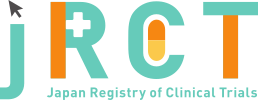臨床研究等提出・公開システム
|
Nov. 19, 2021 |
|
|
Nov. 11, 2024 |
|
|
jRCT2071210095 |
A streamlined, multicentre, randomised, parallel group, double-blind placebo-controlled superiority trial to evaluate the effect of EMPAgliflozin on hospitalisation for heart failure and mortality in patients with aCuTe Myocardial Infarction (EMPACT-MI) |
|
A study to evaluate the effect of empagliflozin on the risk of heart failure/mortality in patients with acute myocardial infarction (EMPACT-MI) |
|
Nov. 05, 2023 |
|
6522 |
|
Refer to 'Baseline Characteristics' in 2-1 Attachment 1 '21245-0202_ClinicalTrials.gov Study Results.pdf. |
|
Refer to 'Participant Flow' in 2-1 Attachment 1 '21245-0202_ClinicalTrials.gov Study Results.pdf. |
|
In this streamlined trial, the investigators were asked to report SAEs, AESIs (serious or non-serious; including contrast-induced acute kidney injury, ketoacidosis, events leading to lower limb amputation, and hepatic injury), and AEs leading to discontinuation of study medication for at least 7 consecutive days (serious or non-serious). On-treatment assessment of safety laboratory data, physical examination, and vital signs was not performed for the general patient population. Median exposure to study medication was about 16 months in both treatment groups, with 68.7% of patients treated for at least 1 year. The frequencies of patients with any AEs to be reported in this trial as well as AEs leading to permanent discontinuation of study medication, serious AEs and fatal AEs were similar between the empagliflozin and placebo groups. The frequencies of AESIs (ketoacidosis, adverse events leading to lower limb amputation, contrast-induced acute kidney injury, hepatic injury), as well as specific AEs of volume depletion, hypotension, hypoglycemia, acute renal failure to be reported in the trial were low. Overall, empagliflozin was considered to be safe and well-tolerated. No new safety concerns were identified in this trial. |
|
For the primary endpoint, time to the first event of HHF or all-cause mortality, no significant difference was observed between the empagliflozin and the placebo group. While no treatment effect was seen for all-cause mortality, a lower risk for empagliflozin versus placebo was observed for time to first HHF based on exploratory analyses. Subgroup analyses for the primary endpoint showed consistency across demographics, baseline characteristics, and baseline medications. As the analysis of the primary endpoint was not statistically significant and following the hierarchical hypothesis testing, the key secondary endpoints were analysed in an exploratory manner. For the key secondary endpoint of non-elective all-cause hospitalisations or all-cause mortality, the adjusted event rate was lower in the empagliflozin group compared with the placebo group in an exploratory sense. For the key secondary endpoints total number of HHF or all-cause mortality, non-elective CV hospitalisations or all-cause mortality, and total number of hospitalisations for MI or all-cause mortality, the adjusted event rates were comparable between the treatment groups. There was no difference in risk of the secondary endpoint time to CV death between the empagliflozin and placebo group. The effect of empagliflozin on HHF observed in the EMPACT-MI trial is consistent with results of the EMPA-REG OUTCOME trial, the EMPEROR trials, and the EMPA-KIDNEY trial. |
|
This trial investigated the effect of empagliflozin vs. placebo added to standard of care on clinical outcome events in patients hospitalised for acute MI with an elevated risk of HHF and mortality. Analyses of the primary endpoint, time to the first event of HHF or all-cause mortality, did not show a significant treatment difference between the empagliflozin and the placebo group. While no treatment difference was found for all-cause mortality, a lower risk for empagliflozin versus placebo was observed for |
|
April. 06, 2024 |
|
https://www.nejm.org/doi/full/10.1056/NEJMoa2314051 |
Yes |
|
After the study is completed and the primary manuscript is accepted for publishing, researchers can use this following link https://www.mystudywindow.com/msw/datasharing to request access to the clinical study documents regarding this study, and upon a signed 'Document Sharing Agreement'. Also, Researchers can use the following link https://www.mystudywindow.com/msw/datasharing to find information in order to request access to the clinical study data, for this and other listed studies, after the submission of a research proposal and according to the terms outlined in the website. The data shared are the raw clinical study data sets. |
|
https://jrct.mhlw.go.jp/latest-detail/jRCT2071210095 |
Crisan Ioan |
||
Fortrea Inc. |
||
Str. Anghel Nutu, 18A, Sector 5, Bucharest, Romania |
||
40-728-844-418 |
||
Ioan.Crisan@fortrea.com |
||
Umezawa Daisuke |
||
Fortrea Japan K.K. |
||
Harumi Triton Square Office Tower Y 8F 1-8-11, Harumi, Chuo-ku,Tokyo |
||
+81-90-2705-4005 |
||
Daisuke.Umezawa@fortrea.com |
Complete |
Nov. 19, 2021 |
||
| Sept. 22, 2021 | ||
| 260 | ||
Interventional |
||
randomized controlled trial |
||
double blind |
||
placebo control |
||
parallel assignment |
||
treatment purpose |
||
1. Signed and dated written informed consent in accordance with ICH-GCP and local legislation prior to admission to the trial |
||
1. Diagnosis of chronic heart failure prior to the myocardial infarction |
||
| 18age old over | ||
| No limit | ||
Both |
||
Myocardial Infarction |
||
Empagliflozin (BI 10773) 10 mg or placebo corresponding to empagliflozin 10 mg is orally administered once daily. |
||
Composite of time to first HHF(Hospitalisation for heart failure) or all-cause mortality |
||
| Boehringer Ingelheim |
| Miyazaki Medical Association Hospital Institutional Review Board | |
| 1173, Oazaarita, Miyazaki-shi, Miyazaki | |
+81-985-77-9101 |
|
| Approval | |
July. 16, 2021 |
| NCT04509674 | |
| ClinicalTrials.gov |
Argentina/Australia/Brazil/Bulgaria/Canada/China/Denmark/France/Germany/Hungary/India/Israel/Republic of Korea/Netherlands/Poland/Romania/Russian Federation/Serbia/Spain/Ukraine/USA |
